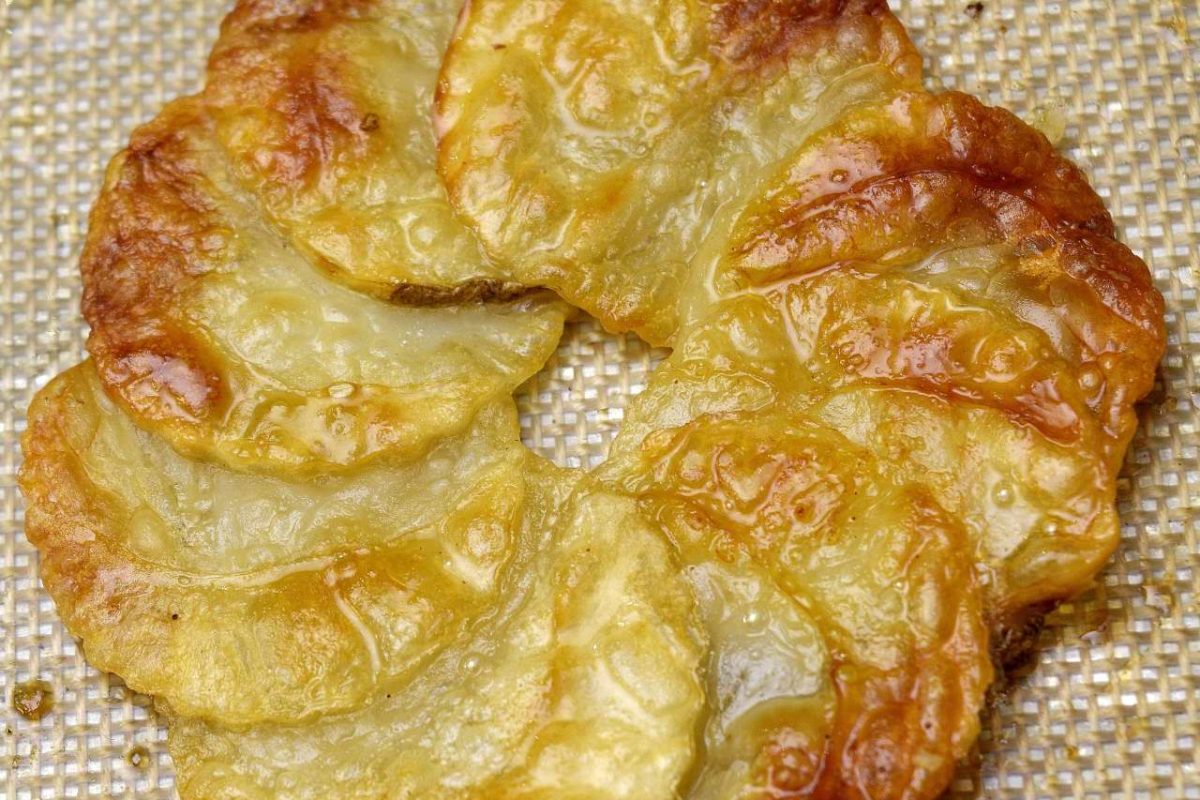Serves 4
Level of difficulty, 2.75
Discussion:
There are many ways to approach this potato dish. The potatoes can be processed sous vide in advance at 183 F/84 C for exactly one hour and shocked cold.
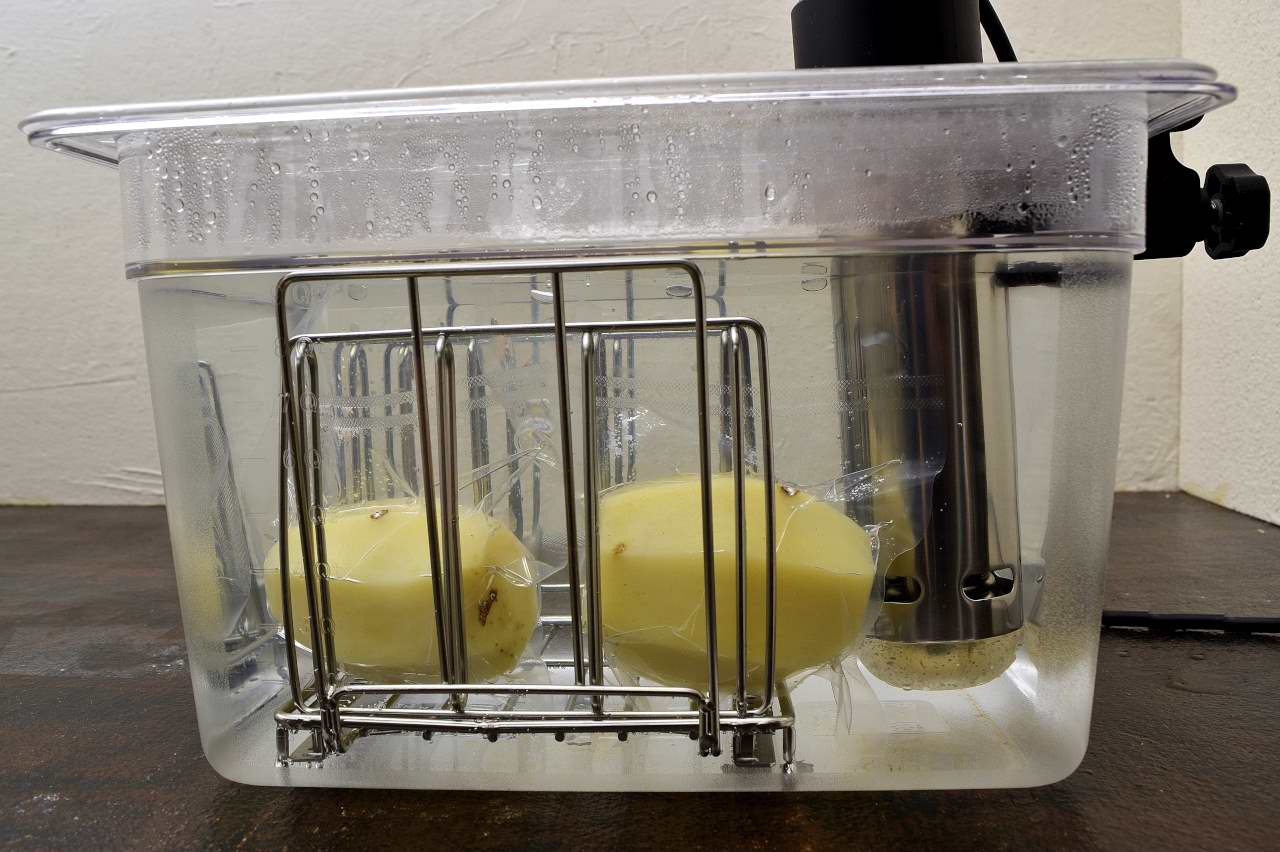
They can be peeled in advance, or after processing. Although sous vide is not essential in this case, it does offer an advantage. After slicing, the cooked potatoes will not turn black if they are not cooked promptly. The disadvantage is that the potatoes may be slightly more difficult to slice thinly because of the starchy/waxy texture. In the ancient method, the galettes are cooked one serving at a time in a skillet. This is not difficult, but it is rather time consuming if you want to do more than one. The updated method is to use a sheet pan/cookie sheet with either parchment or a non-stick silicone mat, which I highly recommend. They have many applications.
My preference is to slice the unpeeled, raw potatoes lengthwise into 1/16″/1.5 mm thick, and then to cut them into circles. This is the method we will be using today. If you prefer to use sous vide processed potatoes, the recipe is the same–just be careful not to damage the potatoes during the slicing step. You may have to slice them a little thicker, and that’s fine too. When you get right down to it, it’s a fancy version of a hash brown/home fry.
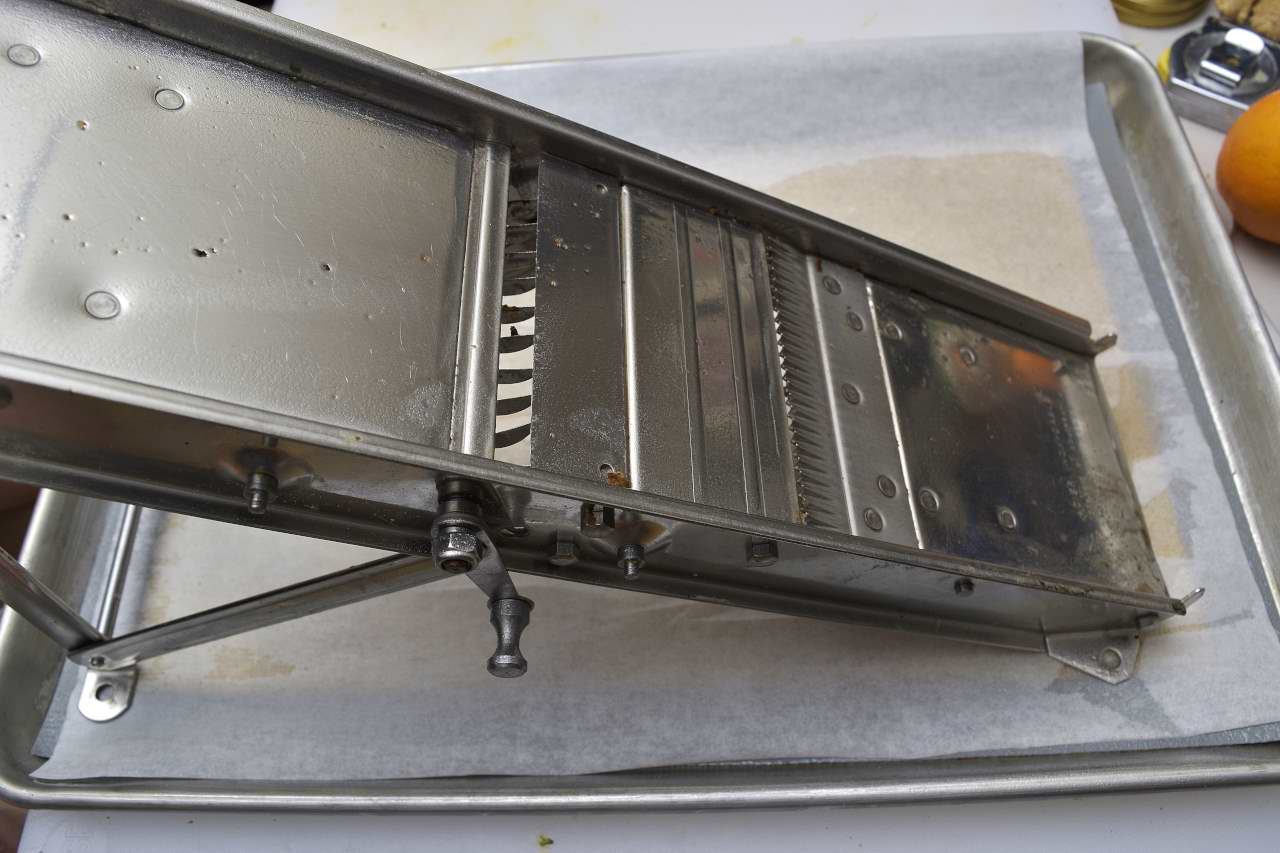
A mandolin or mechanical slicer will slice the potato thin enough to be flexed, but not so thin as to lose structural integrity.
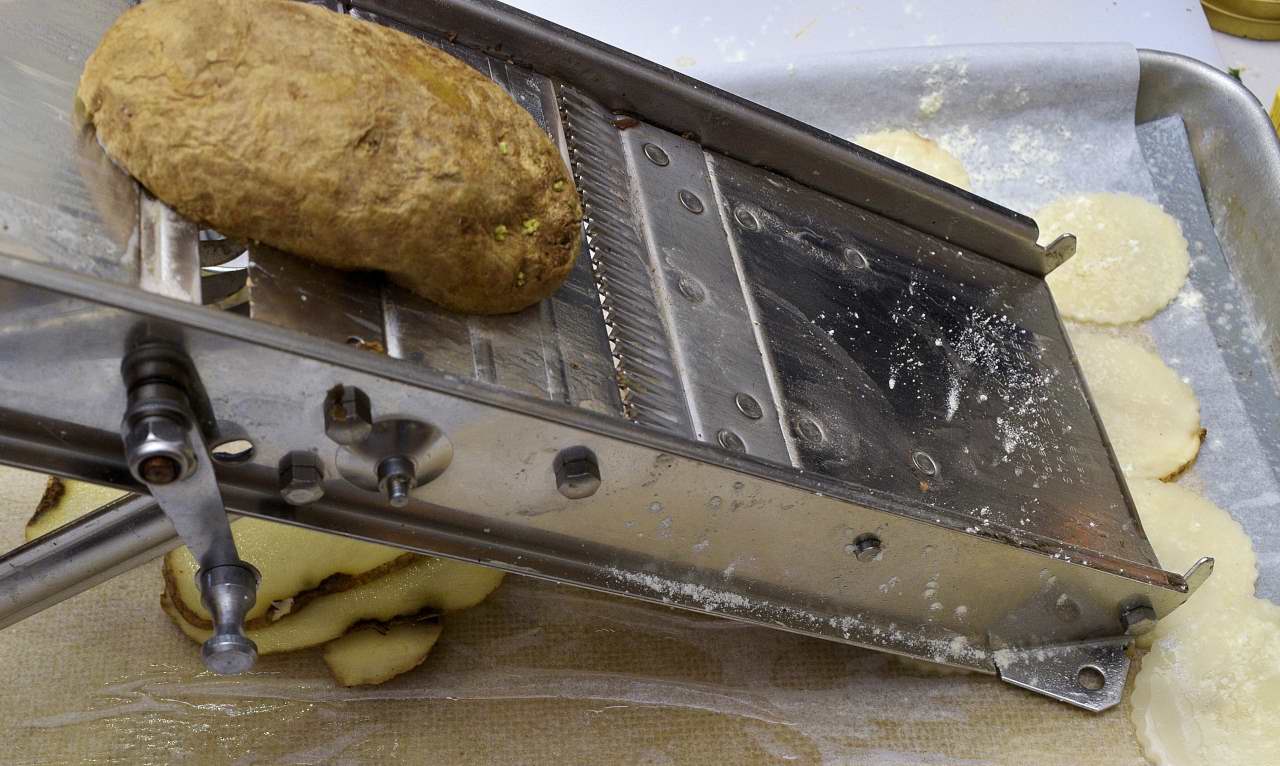
Slice one of the potatoes lengthwise. Note that the potato appears to be shriveled, and a few of them even had “eyes” on them. Most people discard these, but they are actually the best for this application, and for French fries too. Why? Because the potato has dried out from sitting at room temperature for a couple of weeks. The less water, the less likely to stick, and the crisper the end product will be.
No one will tell you this, but, well, let’s just say that MacDonald’s is aware. My understanding is that they came upon this fact accidentally. So much for research laboratories and GMO. All you have to do is buy too many potatoes and let some of them go a little “bad.”
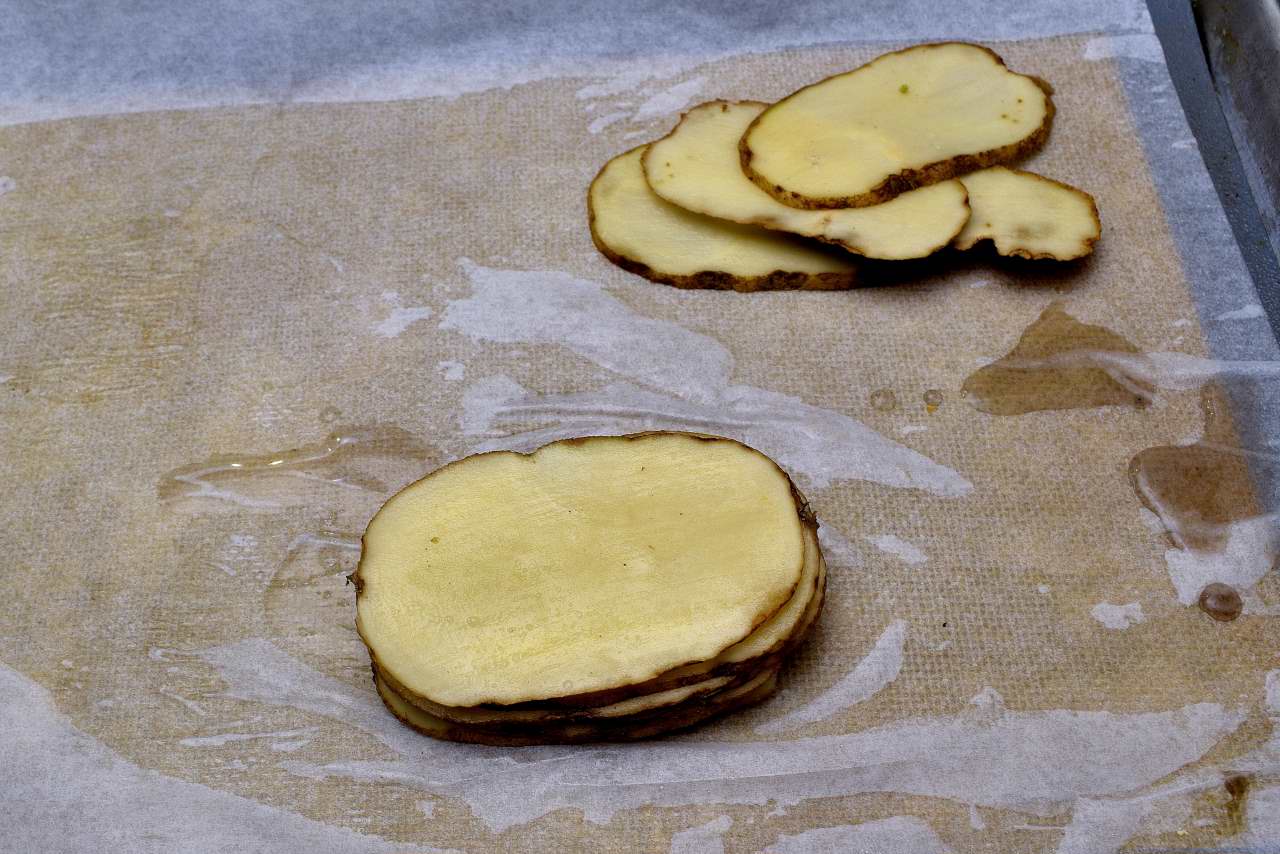
Stack up approximately 8 slices. Then, use a metal ring cutter/cookie cutter/pastry ring to cut perfect circles.
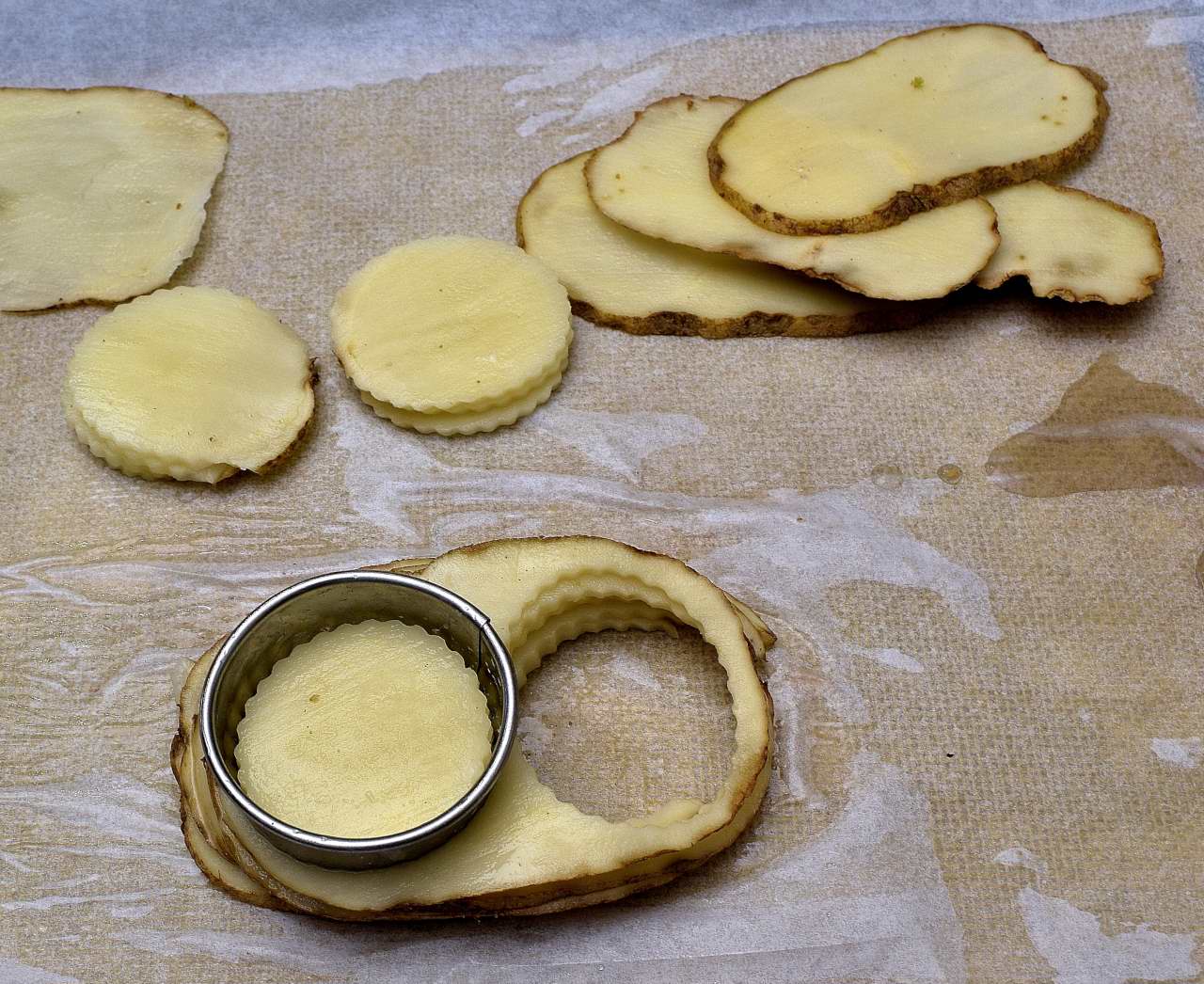 Pastry rings like these are readily available on line. Use the pastry cutter to cut all the way through the stack. Repeat with however many slices of potatoes remain. Depending on the size of the potatoes and the size of the ring, you may be able to cut two circles from each slice.
Pastry rings like these are readily available on line. Use the pastry cutter to cut all the way through the stack. Repeat with however many slices of potatoes remain. Depending on the size of the potatoes and the size of the ring, you may be able to cut two circles from each slice.
Procedure:
Clarify the butter. The best way to do this is gently. A microwave will make the butter explode. Most people use a pan, but if the butter actually boils, it becomes impossible to separate it. It may also burn. Click HERE to see how to use sous vide to perfectly clarify butter every time.
Preheat the oven to
350 F/176 C
Line one of the cookie sheets with the silicone mat (or parchment). Coat liberally with spray release (PAM).
Gauge the size of your plate inside the rim to determine the size you want–the potatoes should always fit INSIDE the rim of the plate. Overlap the slices on the sprayed silicone mat so that each one covers half of the one before it.
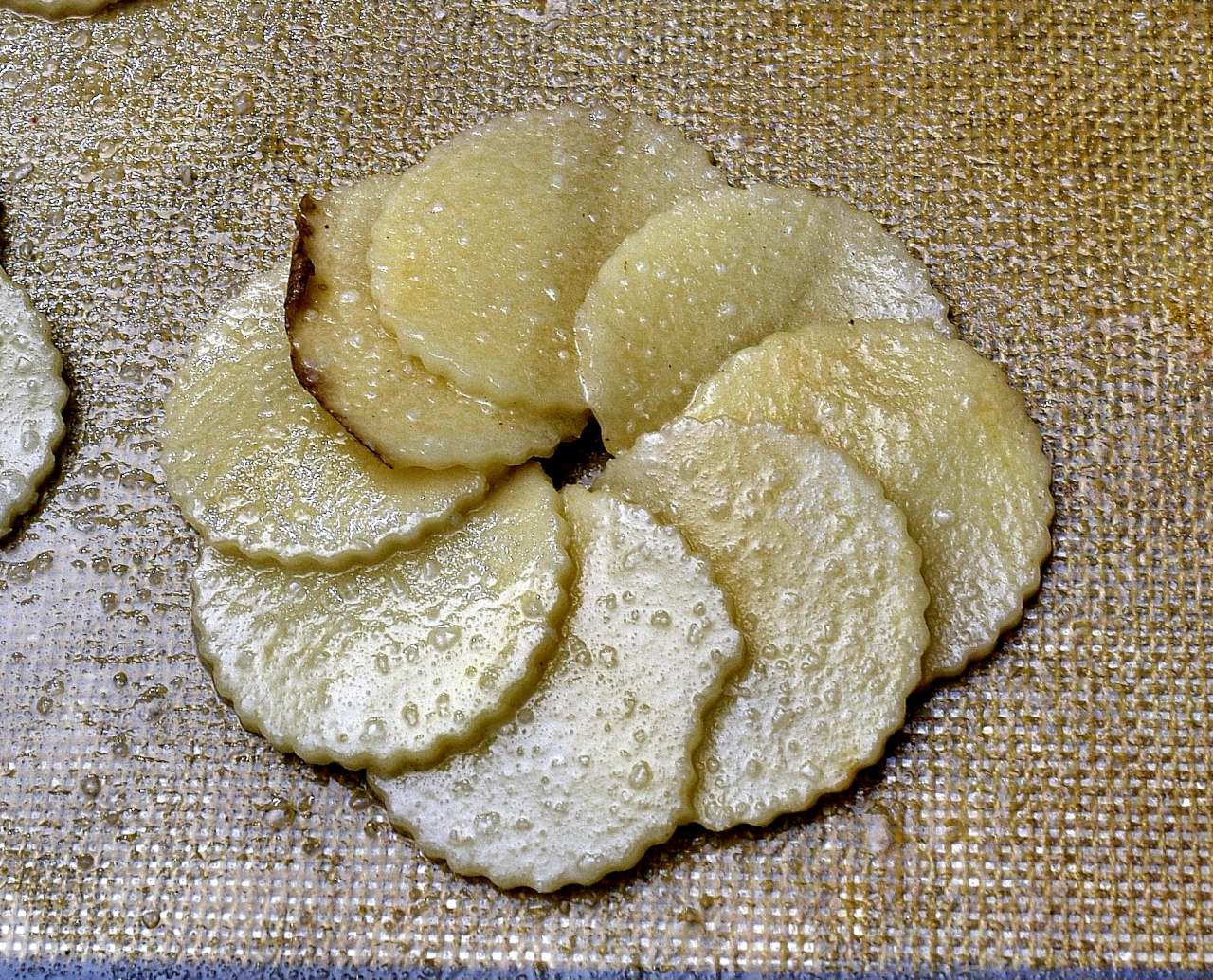
They can be as few as 7 or 8 slices, or as many as 16, depending on the size of the potatoes and the size of the circle that you want for a particular application. Sprinkle the galettes with salt and spray again with the PAM–this will keep the potatoes from darkening long enough to repeat the process.
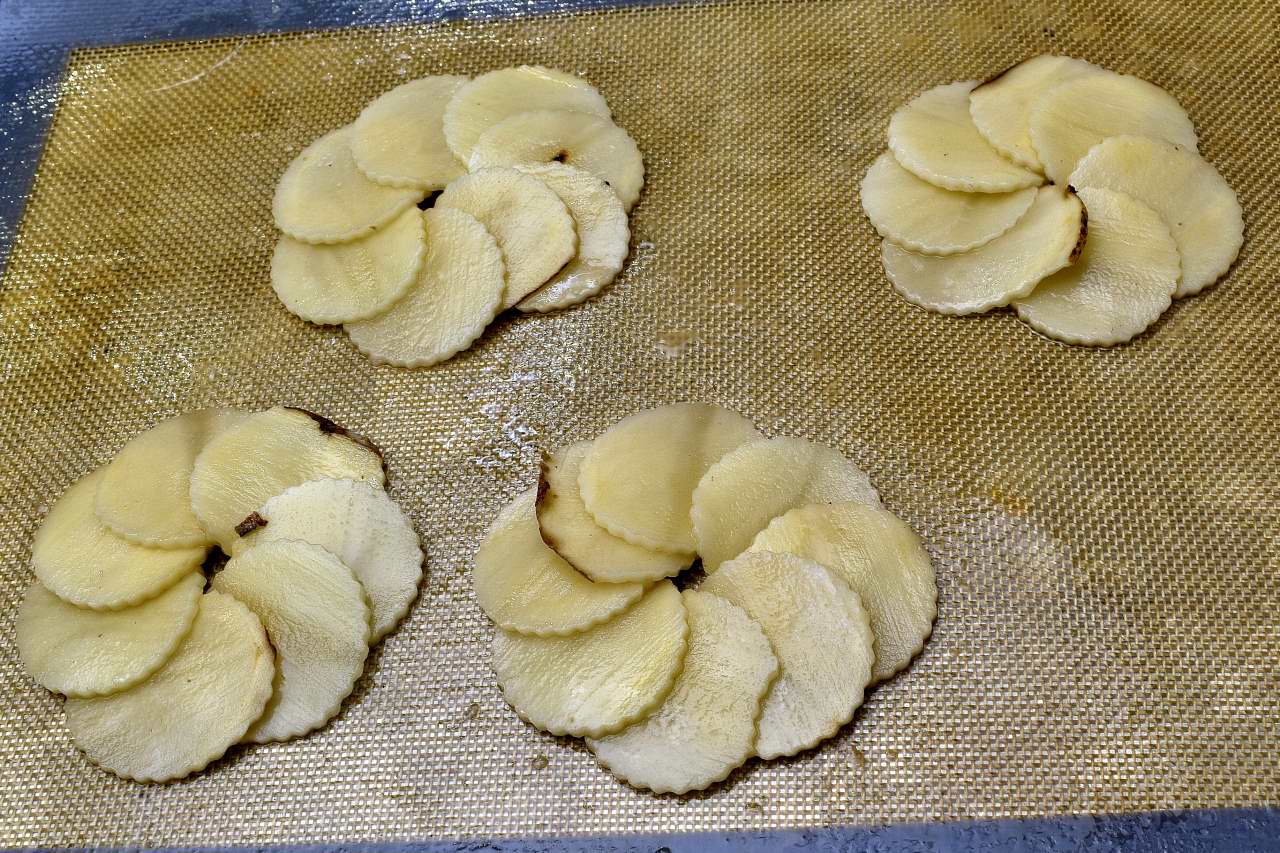
Use the same procedure three more times, so that you have four galettes on the sheet pan. Make sure you spray the potatoes each time you complete a galette. Lay a piece of parchment on top of them. Lay another sheet pan on top of the parchment to press it down on the potatoes. This is important.
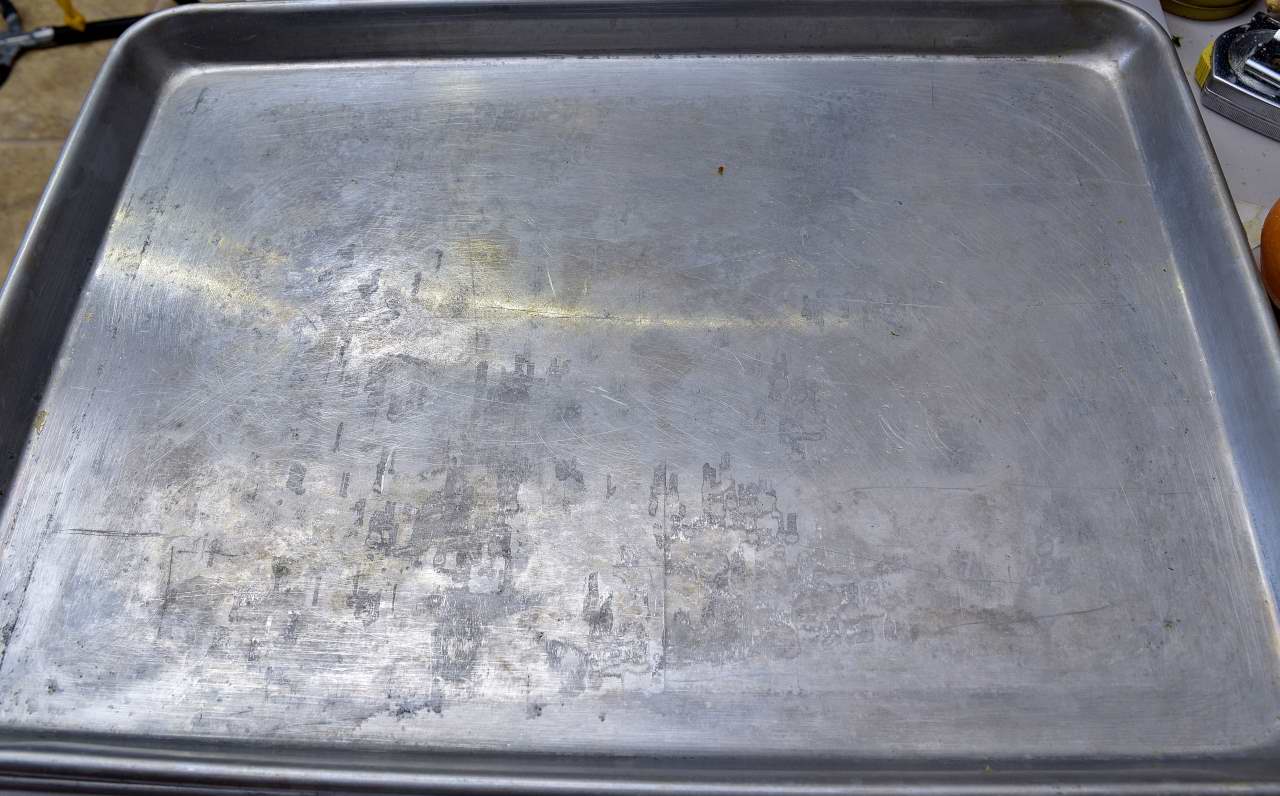
Bake in the preheated 350 F/176 C oven for half an hour. Remove from the oven and allow to cool for a few seconds. Carefully remove the sheet pan and the parchment.
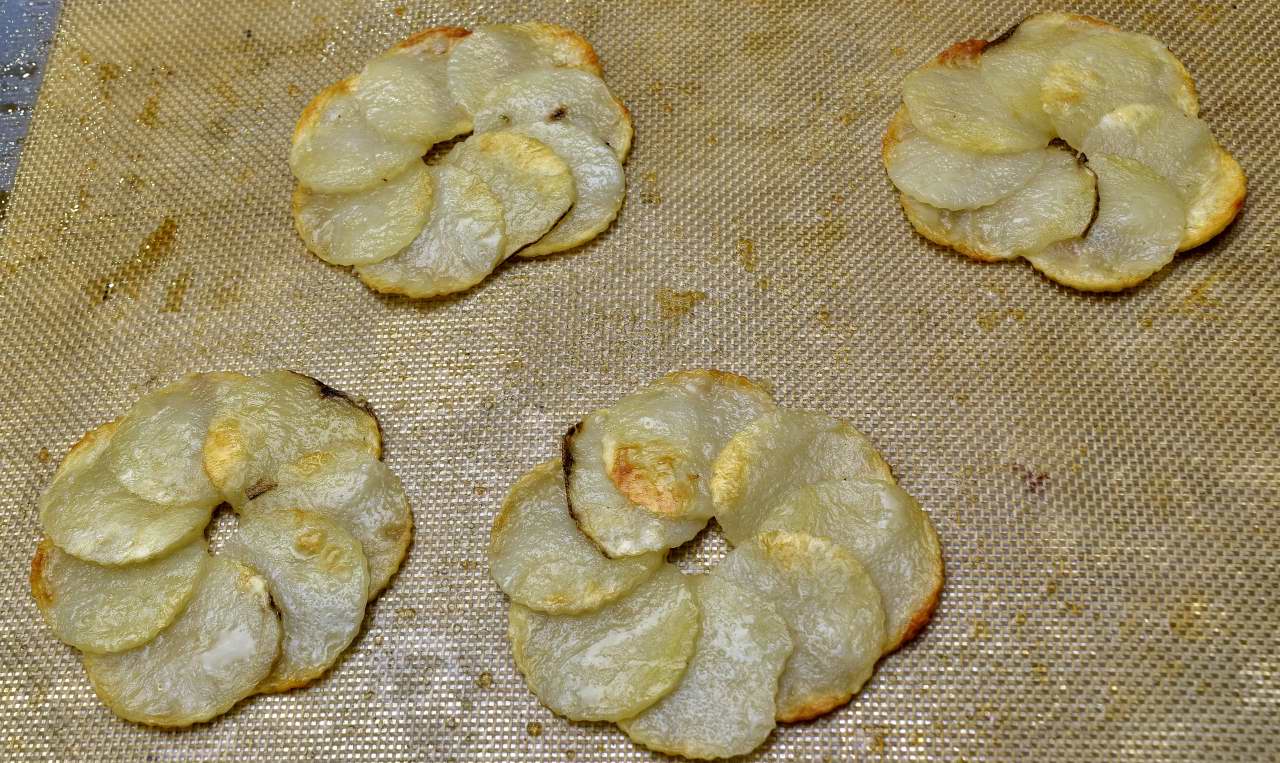
Drizzle the clarified butter over the galettes.
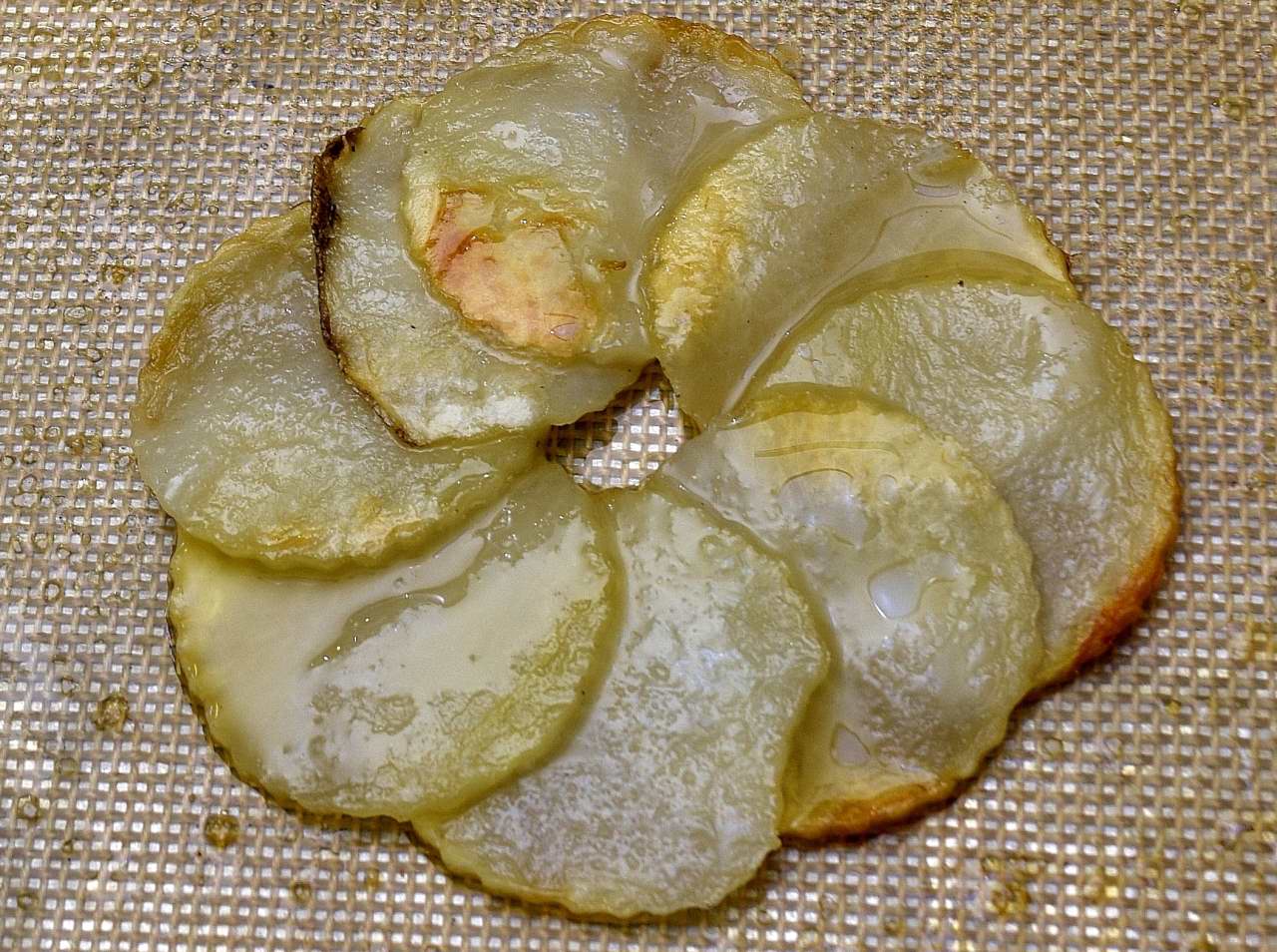
Return the potatoes to the oven. Bake for another half hour or until they are brown and of course, crisp around the edges.
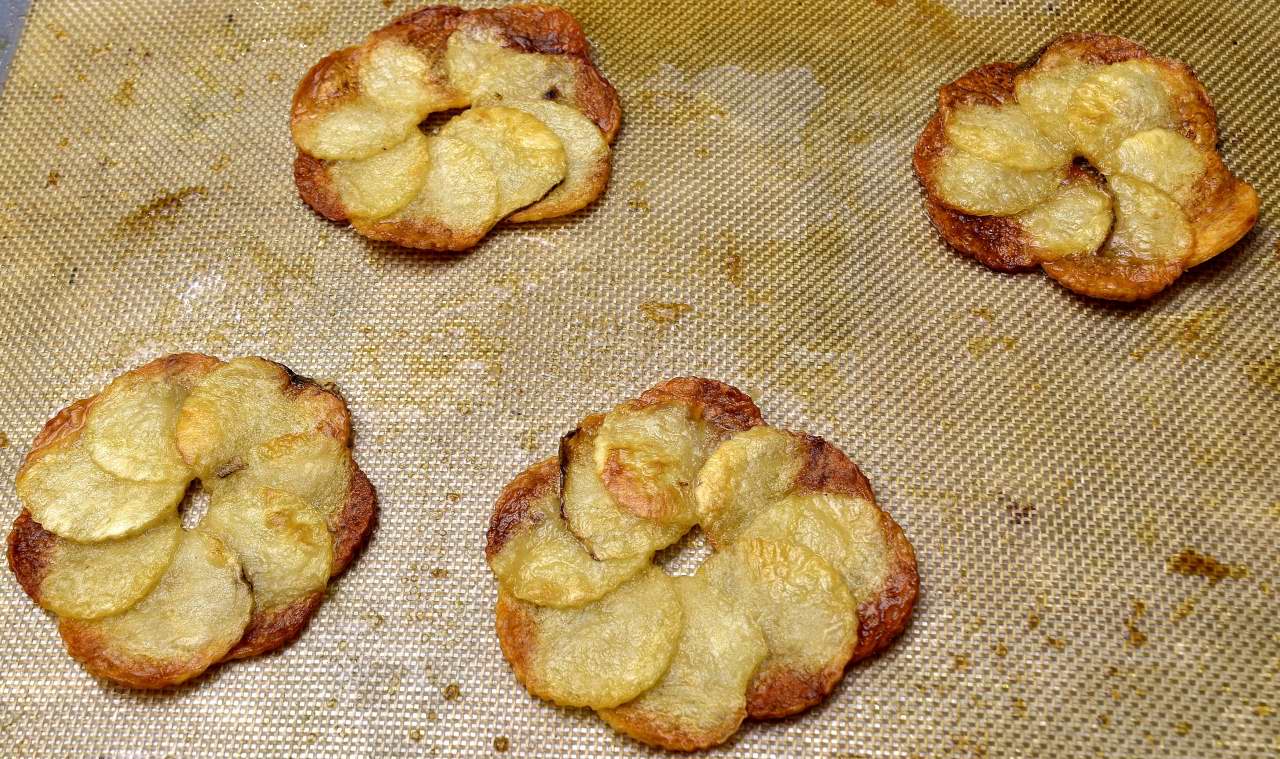
And now for the most important part: Bottoms up! Turn them over!
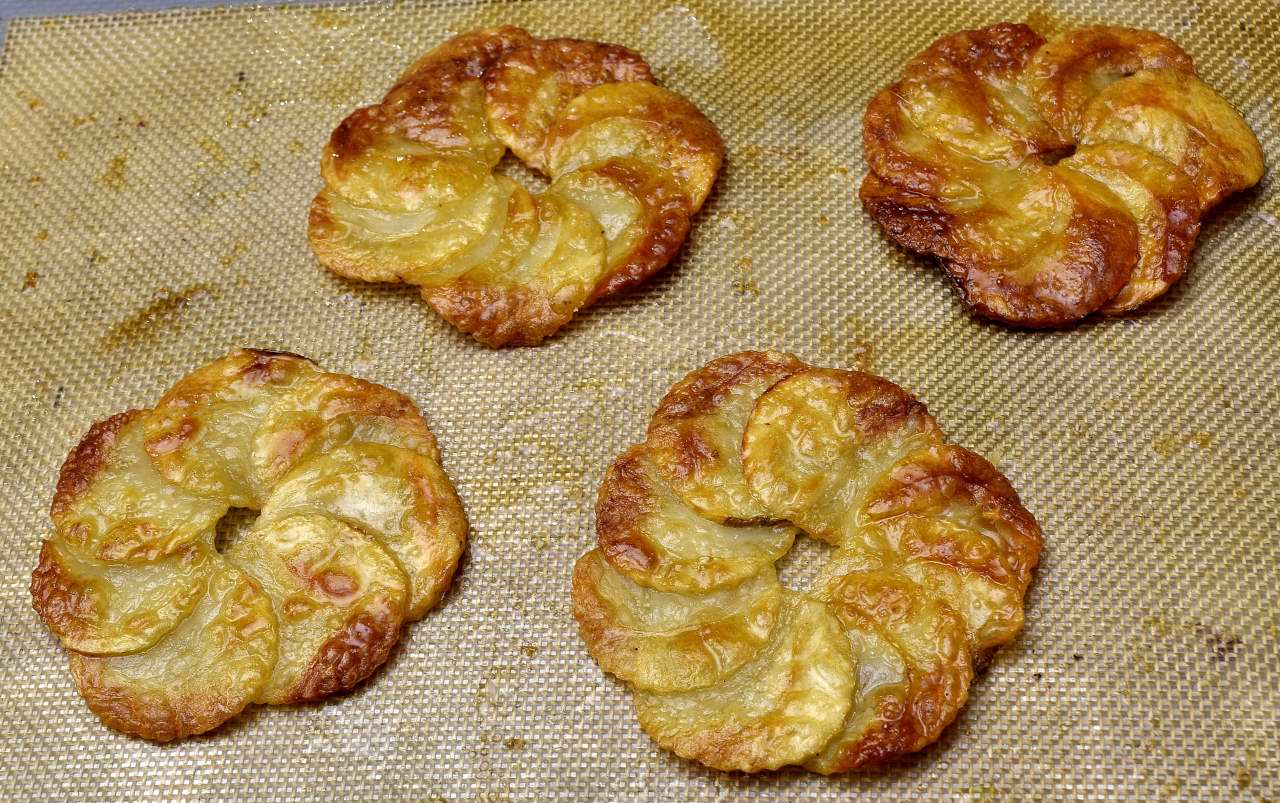
I make a distinction for items like this. They are not difficult, unless you are impatient. We could all stand to be a little more patient, n’est-ce pas? They are time intensive, and there are multiple steps. Like hopscotch, or jacks, or marbles. They don’t take as long as golf. Or even bowling!
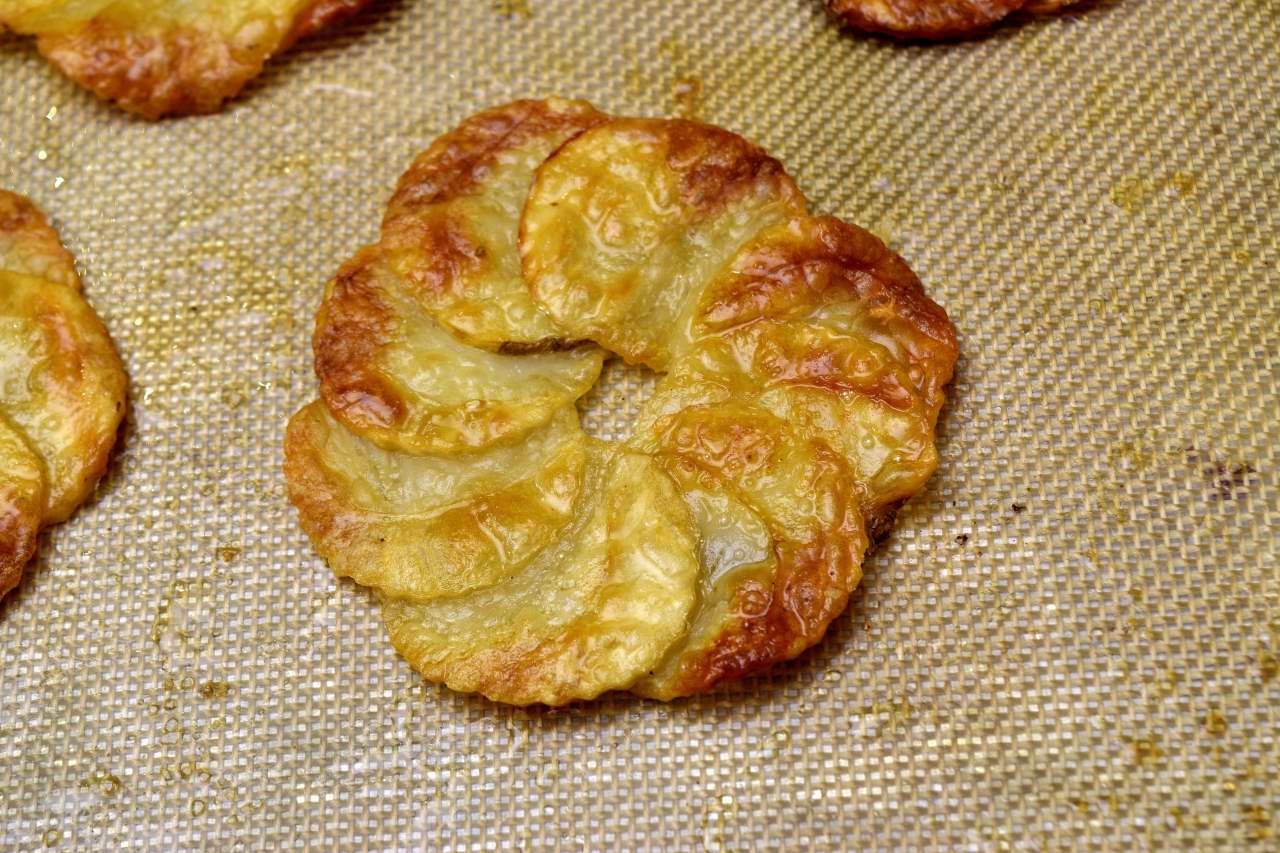
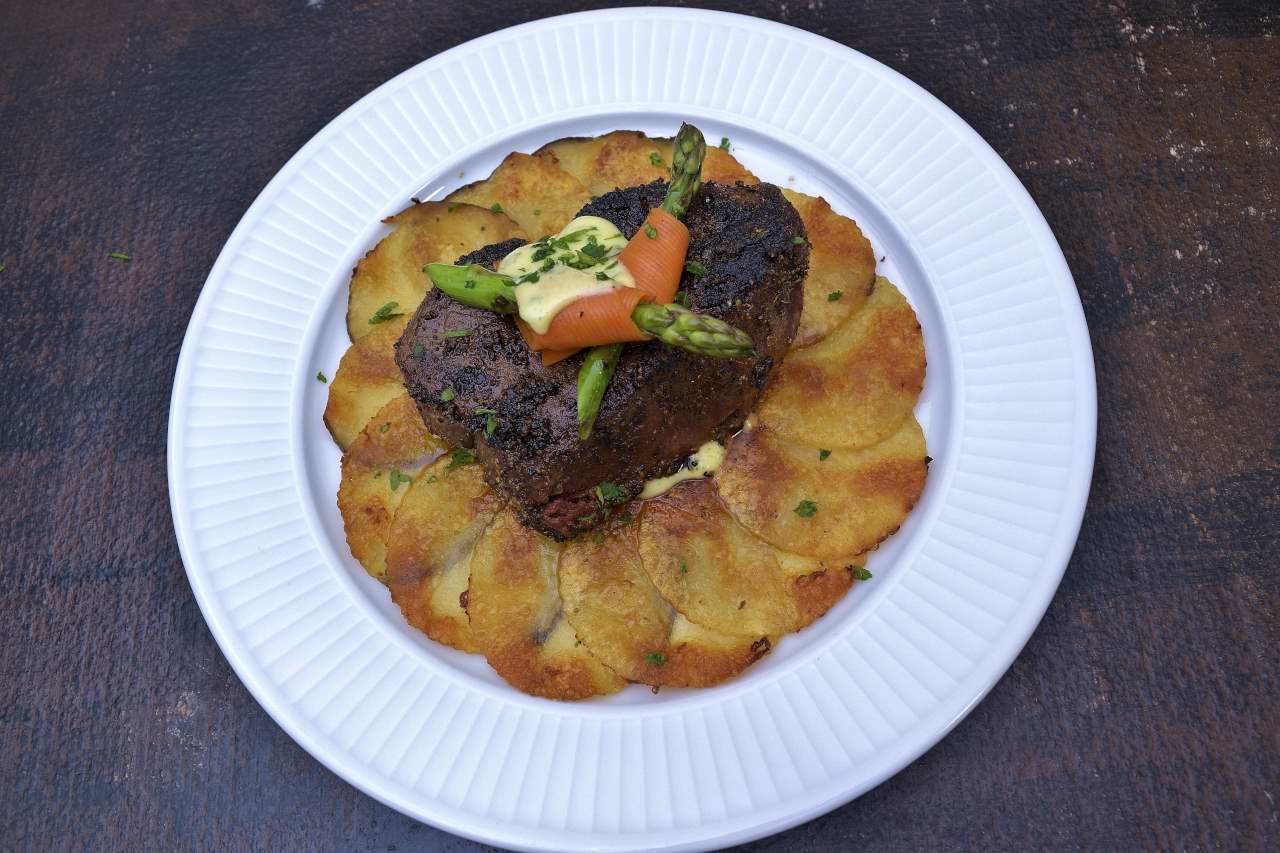
In the picture above, we see the 16 piece galette that just fits inside the rim of the plate.
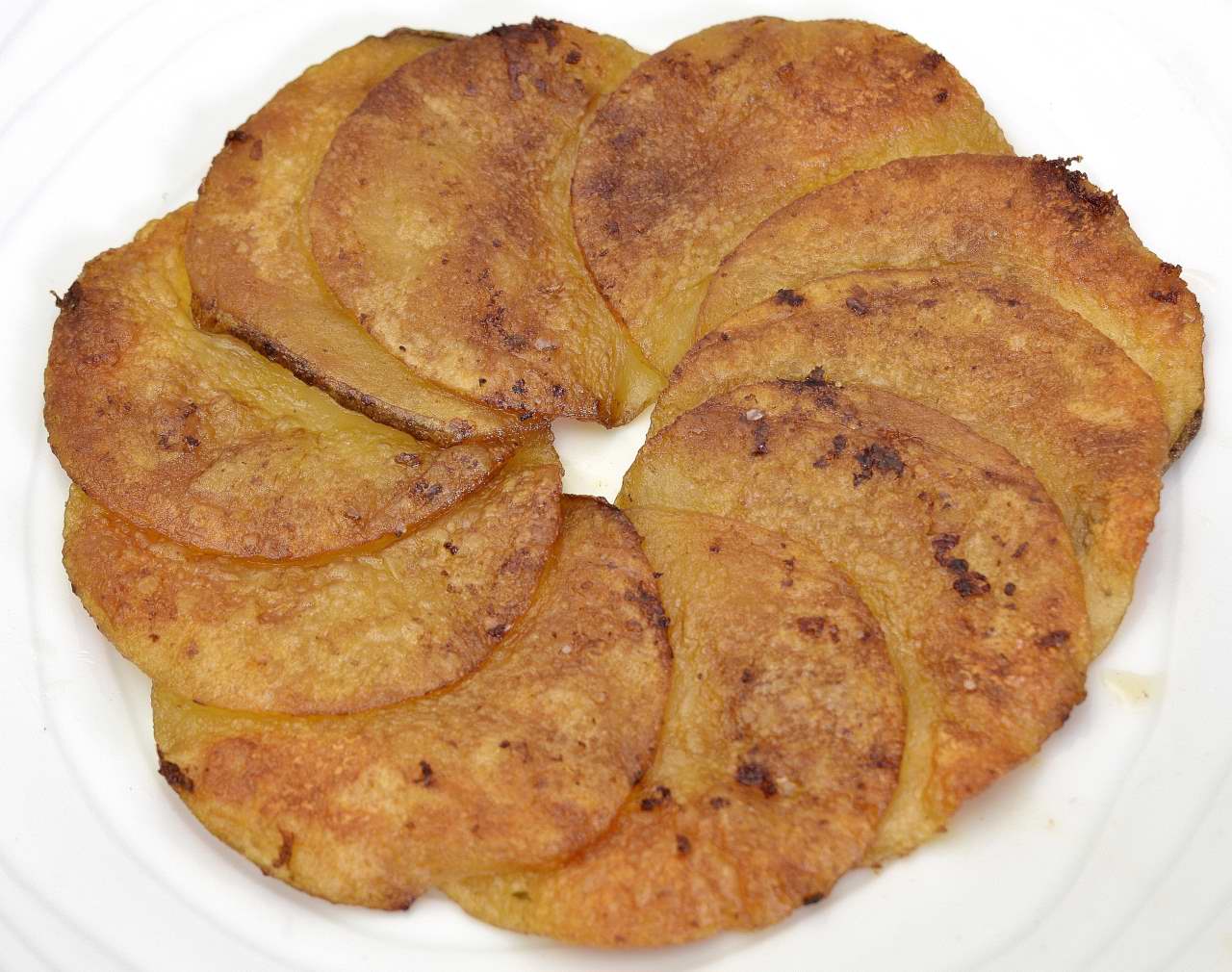
In the picture above, we see a galette that was done entirely in a pan. Like I said, it is time intensive, but the principle is the same–the potatoes are arranged in the seasoned pan. The burner is turned on low, and they are cooked for ten minutes covered, then ten minutes uncovered. Then they are cooked for ten minutes covered again, and then uncovered until they are brown.
They’re fun, as long as nobody is standing over you watching you and the clock. It is hard to believe, but many years ago, apprentices would spend an entire day making these in pans, usually two at a time. It was generally considered punishment for offending the chef in one way or another, like being assigned to make the Hollandaise or to assemble one hundred brochettes.

If you make them small enough, they can be made to stand up!
Happy crisping!
Norm King
